
Harbin Famous Food Guide: Eat Like a Local
By Jane
Hey, there. I’m Jane, a travel planner at JustChinaTours who has spent years guiding travelers through Harbin. The city’s cuisine is a reflection of its unique history, influenced by Russian, Northeastern Chinese, and Manchu traditions.
In this article, I’ll share not only the must-try dishes but also my personal experiences and tips, so you can enjoy Harbin’s food scene like a local.
Iron Pot Stew (铁锅炖): A True Northeastern Comfort
If you ask me which dish best represents Harbin’s food culture, I’d say Iron Pot Stew. It’s not just a meal; it’s an experience. Served in a large cast-iron pot simmering over a fire, the stew combines meat (often pork ribs, chicken, or fish), vegetables, and handmade corn pancakes stuck around the side of the pot.
From a traveler’s perspective, this dish is worth seeking out because it perfectly captures the hearty, rustic flavors of Northeastern China. I always recommend trying it in a countryside-style restaurant outside central Harbin—where the portions are generous and the atmosphere feels truly local.
Expert Tip: For groups, this dish is ideal. It’s usually portioned for sharing, making it both affordable and social.
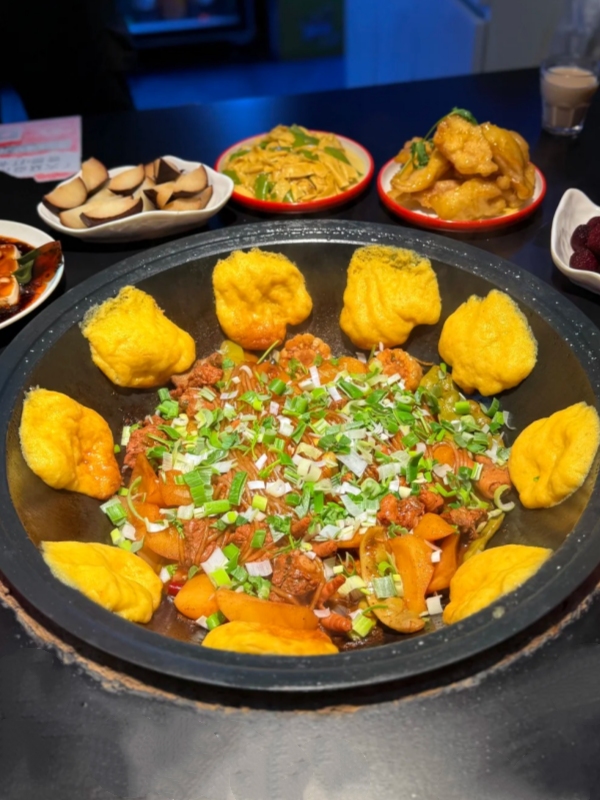
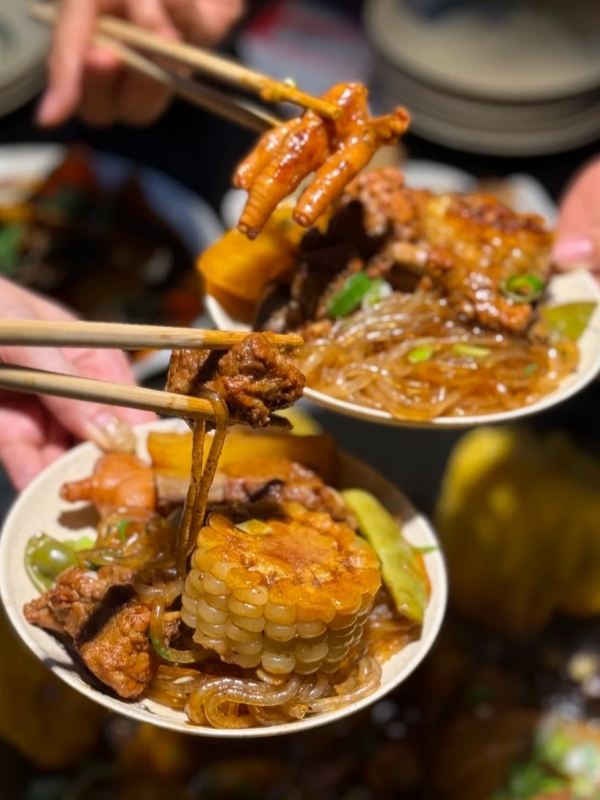
Harbin Dumplings: More Than Just a Snack
Dumplings are a staple across China, but Harbin gives them its own twist. The filling tends to be richer, often including pork with cabbage, sauerkraut, or even venison. Some places even serve them fried with a crispy bottom layer, which I personally love on a winter evening.
If you’re walking near Central Street, you’ll find countless dumpling shops—some small and family-run, others more modern. Whenever I guide travelers, I suggest visiting a restaurant where dumplings are hand-wrapped in front of you. The texture of freshly made dough is completely different from pre-prepared ones.
Expert Tip: Order a mix of fillings. Harbin locals take pride in their sauerkraut dumplings, a taste you won’t easily find elsewhere in China.
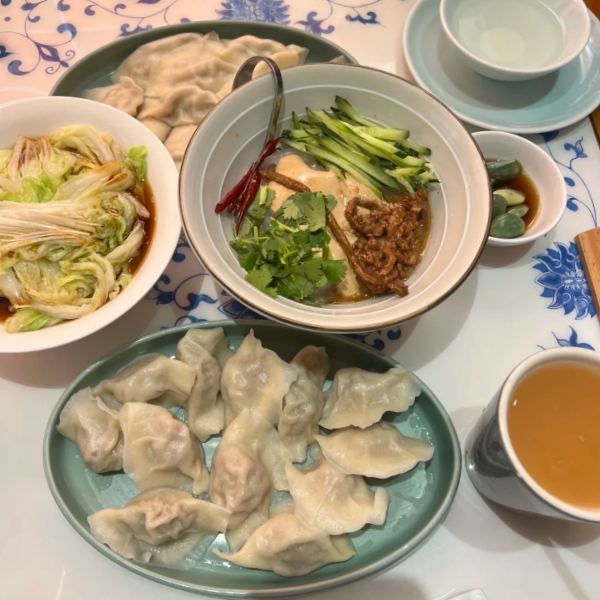
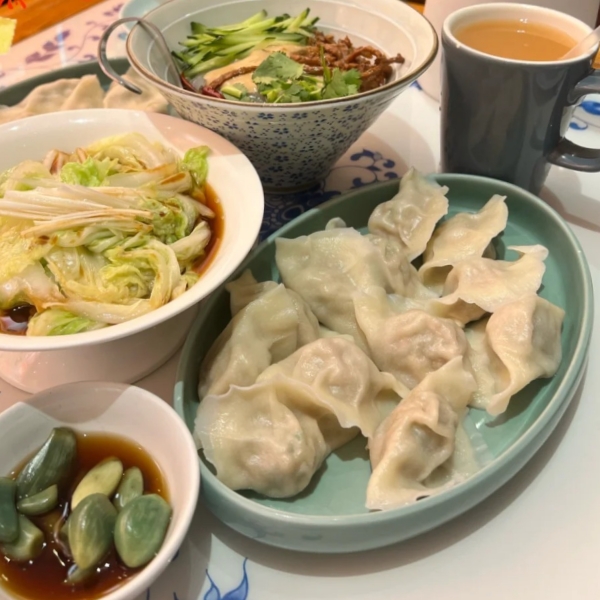
Harbin Smoked Red Sausage (哈尔滨红肠)
One food that instantly reminds people of Harbin is the Smoked Red Sausage, originally inspired by Russian and Eastern European methods of sausage-making. It has a smoky, garlicky flavor and is less greasy than many other types of sausage.
As a travel expert, I’ve noticed many guests like to buy it as a snack for train journeys or to take home as a local specialty. It’s available in supermarkets and local markets, but I usually suggest trying it fresh from well-known brands like Qiulin (秋林).
Expert Tip: Pair smoked sausage with Harbin beer, especially the classic Harbin Beer, for a simple but authentic local experience.
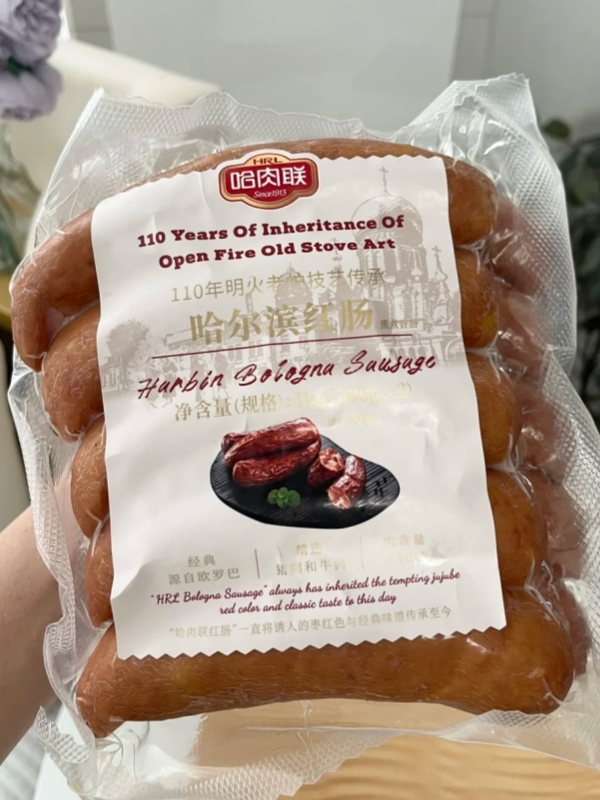

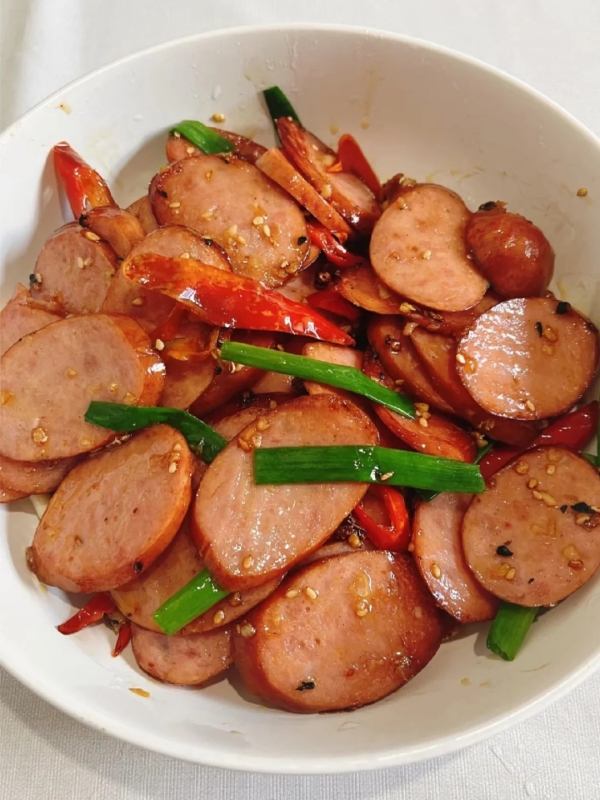
Sweet and Sour Pork (锅包肉): A Northeastern Classic
You might think of sweet and sour pork as a dish you can find anywhere in China, but Harbin’s version—Guo Bao Rou—is unique. It uses potato starch for the batter, making the coating especially crisp, and the sauce is lighter, balancing sweet and sour perfectly.
Whenever I bring guests to try this dish, they’re surprised at how different it tastes compared to the versions they’ve eaten elsewhere. It’s also a dish that locals frequently recommend, so you know it’s not just for tourists.
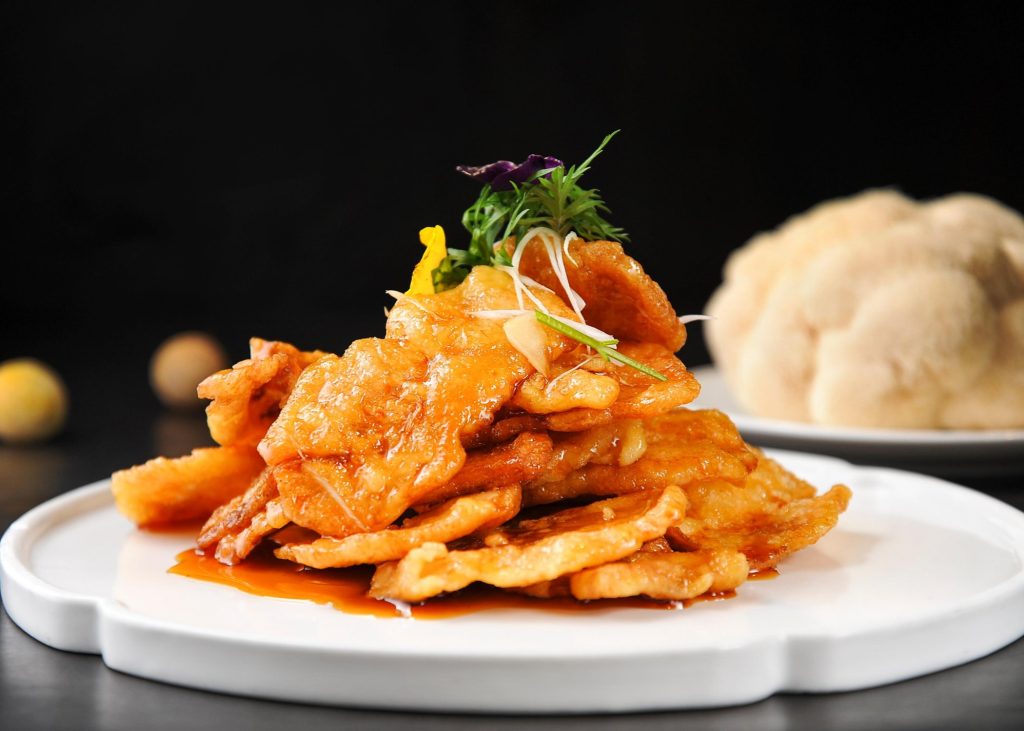
Bread and Russian-Style Pastries
Because of Harbin’s Russian influence, bread plays an unusually important role here compared to most Chinese cities. You’ll find dark rye bread, sweet pastries, and butter-filled rolls in bakeries along Central Street. One of my personal favorites is Lieba bread—dense, slightly sour, and best eaten with butter or jam.
Expert Tip: Visit one of the old Russian bakeries early in the morning when the bread is fresh. Many of my guests end up taking an extra loaf on their travels.
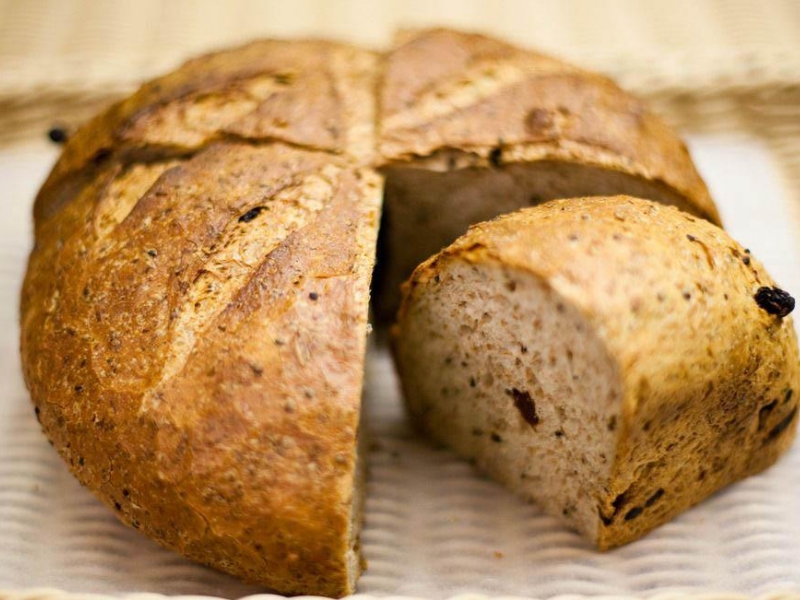
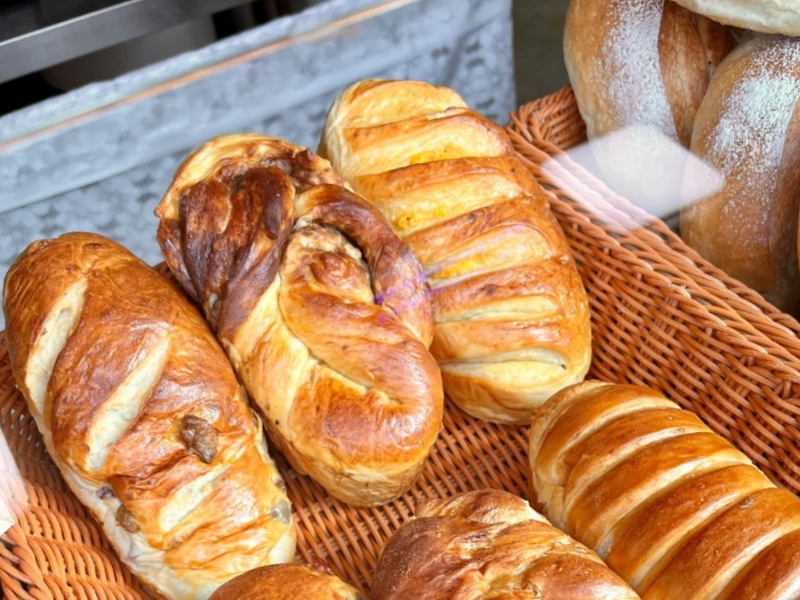

Ice Cream in Winter: A Harbin Tradition
It might sound strange, but eating ice cream outdoors in sub-zero temperatures is a beloved tradition in Harbin. The famous Modern Ice Cream brand is sold near Central Street and has been a local favorite since the 20th century. The texture is firm, the sweetness is mild, and surprisingly, it doesn’t feel as cold when eaten in Harbin’s dry winter air.
When I tried it for the first time, I thought it was just a gimmick. But after seeing locals, young and old, happily enjoying it in minus 20°C weather, I realized it’s an essential Harbin experience.
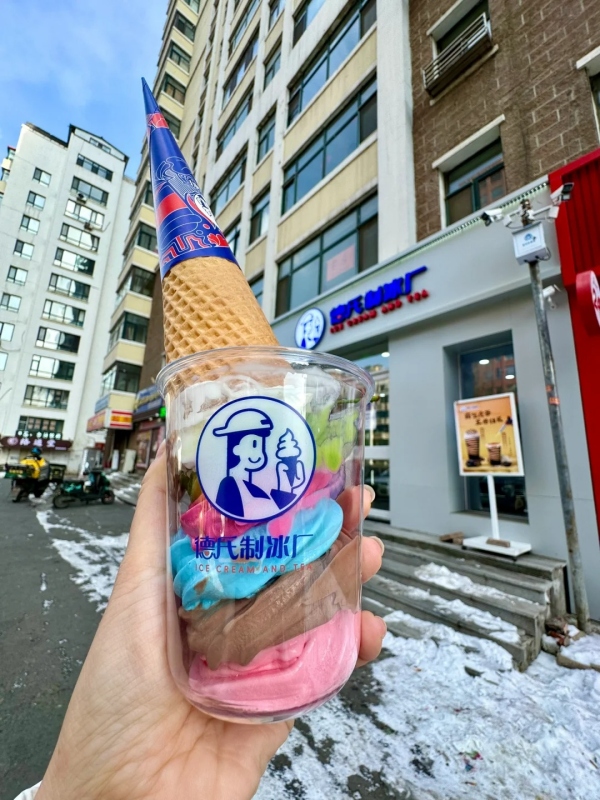


Harbin’s food scene is as much about culture as it is about taste. From the hearty Iron Pot Stew to Russian-style bread, every dish tells a story of the city’s history and resilience in its cold climate. My suggestion for travelers is to balance well-known specialties like smoked sausage with more authentic local experiences such as dumpling dinners in family-run shops.
I believe food is one of the best ways to understand Harbin’s character. Whether you’re here for a few days or longer, setting aside time to explore its flavors will make your trip truly unforgettable.
Explore More: